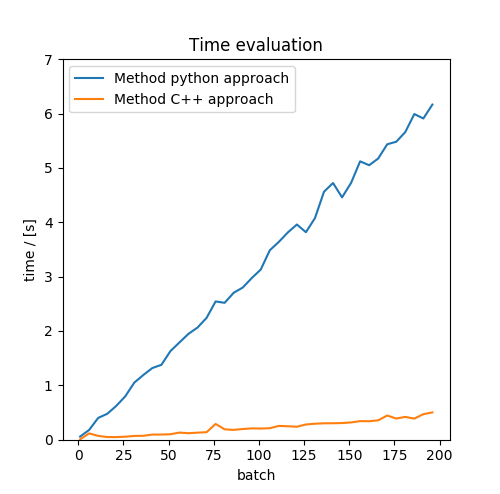Deep Learning Utilities
__, _, __, _, _ _,_ _, _, _ _, _ _, _ _, ___ _, _, _, _,
| \ | |_ |\ | |_| /_\ |\ | / ` | |\ | / _ | / \ / \ | (_
|_/ | , | | \| | | | | | \| \ , | | \| \ / | \ / \ / | , , )
~ ~~~ ~~~ ~ ~ ~ ~ ~ ~ ~ ~ ~ ~ ~ ~ ~ ~ ~ ~ ~~~ ~
Yuchen's Deep Learning Enhancing Tools - Readme
This is a collection of deep learning utilities. You could use it to pre-process some data and do something on numpy arrays efficiently.. Just use it as a common module in python like this.
import dlUtilities as dluNoted that this API need you to install numpy.
Usage
Matrix Projecting
Suppose that we have a matrix that has [height, width, ..., channels], and we need to project the dimension channels into another axis so that we would get a matrix like [height, width, ..., newchannels]. Then we may need a dictionary to help us complete this process. For example, if the input matrix has 3 channels, and we may want to project it into 5 channels. We may use such a projection dictionary:
proj_dict = {
[0 ,128,0 ]:[0,0,0,0,1],
[128,0 ,0 ]:[0,0,0,1,0],
[0 ,0 ,128]:[0,0,1,0,0],
[0 ,64 ,64 ]:[0,1,0,0,0],
[64 ,0, ,64 ]:[1,0,0,0,0]
}which means in the channel axis, we could only have 5 possible kinds of values when considering the data distributions. So we could project it into an one-hot matrix with 5 channels. Noted that a dictionary like the above one is not available, because python does not support you to hash a list-like object. Therefore we use a list as a substitute as our codes:
proj_dictList = [
[np.array([0 ,128,0 ], dtype=np.uint8), np.array([0,0,0,0,1], dtype=np.uint8)],
[np.array([128,0 ,0 ], dtype=np.uint8), np.array([0,0,0,1,0], dtype=np.uint8)],
[np.array([0 ,0 ,128], dtype=np.uint8), np.array([0,0,1,0,0], dtype=np.uint8)],
[np.array([0 ,64 ,64 ], dtype=np.uint8), np.array([0,1,0,0,0], dtype=np.uint8)],
[np.array([64 ,0, ,64 ], dtype=np.uint8), np.array([1,0,0,0,0], dtype=np.uint8)]
]Use the following code to do this work:
pjc = dlu.Projector() # Create projector
pjc.registerMap(proj_dictList) # Register the transfer list
output = pjc.action(input) # Project the matrix
rec_input = x.action(output, True) # Recover the matrix from the output of forward projectionWe would find that this handle could project the matrix and recover it with the same dictionary.
I/O Data
This handle also support you to read some special data by high-level API with low-level realization. Now we only support 1 mode.
Read Seismic Data
Basic
This is an API for reading the raw data from shot/receiver collections. Use the following code to get the avaliable data.
dio = dlu.DataIO() # Create the handle
dio.load(b'path',b'seismic') # Load source files
print(dio) # Show avaliable information
print(dio.size()) # Get information: [shot number, receiver number, time step]
p = dio.read([1, 30]) # Read the 1st and the 30th data collection from the corresponding shots
print(p.shape, p.dtype)
print(dio.size())
p.clear()We also support you to write data as a .BIN file and a .LOG file. Noted that in writing mode, the use of size() is meaningless. Here is an example:
dio = dlu.DataIO() # Create the handle
dio.save(b'path',b'seismic') # Load source files
print(dio) # Show avaliable information
n_b = dio.write(data) # Return the number of written bytes
print(data.shape, data.dtype, n_b)
print(dio)
dio.clear()Batch Reading
Sometimes we need to extract batches (i.e. the local areas) from the original data when training the network. Hence here we provide the batch-reading policy:
dio = dlu.DataIO() # Create the handle
dio.load(b'path',b'seismic') # Load source files
p = dio.batchRead(10, [150, 200]) # Read 10 samples as a batch with a size of h=150, w=200. Noted that h should not be more than receiver number and w should not be more than time steps.
print(p.shape, p.dtype)
print(dio.size())To test the effectiveness of this wrapped C++ approach, we perform a comparison with the python approach.
| A comparison of consumed time between DataIO approaches |
|---|
 |
We could know that the C++ approach is much more efficient than the python approach.
Read FWM180602 Data
This tool is used to read the look-up table generated by another project, FWM180602. Note that because the data is generated by that project, here we only support the load() mode.
Basic
dio = dlu.DataIO() # Create the handle
dio.load(b'path',b'fwm180602') # Load source files
print(dio) # Show avaliable information
print(dio.size()) # Get information: [sample number, parameter number]
p = dio.read([1, 30]) # Read the 1st and the 30th sample from the look-up table
print(p.shape, p.dtype)
print(dio.size())
p.clear()Since the save() mode is not avaliable, if you call it, you would get an error message.
Batch Reading
Sometimes we need to extract batches (i.e. multiple samples) from the whole table randomly when training the network. Hence here we provide the batch-reading policy:
dio = dlu.DataIO() # Create the handle
dio.load(b'path',b'fwm180602') # Load source files
p = dio.batchRead(10, None) # Read 10 samples as a batch. The samples are chosen by a uniform distribution. Note that the second parameter must be `None` due to the generalized API settings.
print(p.shape, p.dtype)
print(dio.size())For more instructions, you could tap help(dlu).
Update Report
Version: 0.7 update report: @ 2018/7/5
- Fix some bugs that may cause memory leaking.
- Improve the code quality by using try blocks to tackle errors.
- Add the mode 'fwm180602' to the 'DataIO.load()'.
- Arrange the format of DLUError.
Version: 0.6 update report: @ 2018/3/3
- Add the 'save' & 'write' methods for 'DataIO' tool.
Version: 0.55 update report: @ 2018/2/23
- Add the
batchReadmethod forDataIOtool.
Version: 0.5 update report: @ 2018/2/21
- Provide the
Projectortool andDataIOtool.
Version of currently used Python library
- Python 3.5 (Linux) | Python 3.6 (Win)
- numpy 1.14